#nakamura utopia
Video
youtube
Today’s featured song is: “Endroll” by Natsushiro Takaaki feat. VY1! (warning: video contains epileptic content)
(Also, today is the 12th anniversary of VY1′s release!)
#vocaloid#vocaloid songs#vocaloid song of the day#song of the day#endroll#vocaloid endroll#vy1 endroll#natsushiro takaaki#vy1#vocaloid vy1#mizki#vocaloid mizki#vy1 mizki#vy1 anniversary#vocaloid anniversary#watanabe takuya#cillia#kyaami#rocoru#nakamura utopia#hatsune miku#epileptic content
4 notes
·
View notes
Text
Animation Night 173: Takashi Nakamura
Hi everyone! It's that time of the week again~
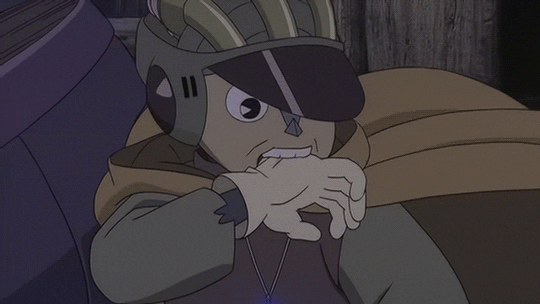
The day that puppets bite their gloves off.
Tonight on Animation Night we'll be taking a look at the works of Takashi Nakamura (中村 たかし).
Nakamura is a director who flies under the radar a bit over here, but for those who know him, he's a unique director - one who we've actually encountered a couple of times before, actually! He directed one of my favourite shorts in Robot Carnival [Animation Night 158] Chicken Man and Red Neck, in which the machinery of a city comes alive to have a violently strange Bosch-like party led by a strange red-robed robot, witnessed only by one salaryman on a moped...
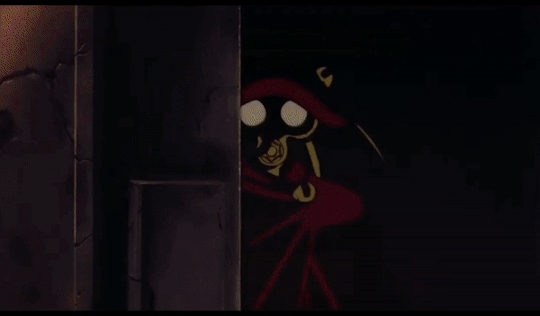
...and if you remember when we looked into the three adaptations of Project Itoh's novels [Animation Night 127], he co-directed Harmony with Michael Arias, a powerfully understated film about a high tech biopower future and people who reject its utopia through a suicide pact. We also saw him in the Japan Animator Expo, with the charming Bubu & Bubulina...
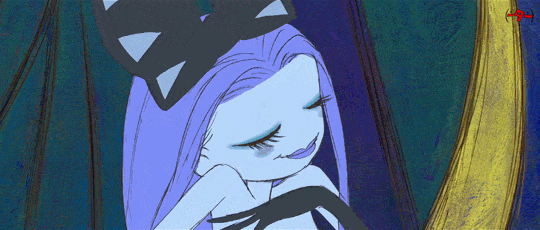
But let's give a fuller story...
As an animator, Nakamura entered the industry very young, signing on as a colourist and inbetweener at Tatsunoko in 1974 - at which point he was only 16, an aspiring mangaka newly arrived in Tokyo. Working in Tatsunoko's distinctive 'industry within an industry', he was introduced to Hirokazu Ishino's 'Anidō' association, in which he was introduced to not just many important animators but also had the chance to see animation from around the world, from Norm McLaren to Japanese independent animators like Kenzō Masaoka. The two films that got him most excited were Takahata's Horus, Prince of the Sun [AN41] and Disney's Fantasia [AN15], both of which contained incredible flexes of effects animation.
(Incidentally, it makes me happy that a lot of the films Watzky mentions showing at Anidō showed up on here! Following in the footsteps of giants and all that.)
Once Nakamura got the animation bug he put aside his manga aspirations and became a key animator, going freelance a couple years later. In 1979 he saw Galaxy Express 999, and got to witness the insane 'liquid fire' effects of Kanada, and he instantly became a devotee - soon enough getting a chance to work with Kanada directly.

And by the early 80s Nakamura was definitely making a name, already working in animation direction and solo-animating entire episodes of Gold Lightan for Tatsunoko. The next couple of years he'd end up working on Nausicaa, Macross DYRL and the with Rintaro [AN53, 134] on Genma Taisen. By now he was specialising hard in effects (not unlike Anno!), and his work had become terrifyingly elaborate, look at this building collapsing into every single element or the clothes coming to the life under the power of a psychic. His work also inspired another incredibly significant animator to enter the industry - Kōji Morimoto, future cofounder of Studio 4°C - and they ended up working together on Genma Taisen.
Meanwhile on Nausicaa, Morimoto handled some of its most memorable scenes like the opening sequence where Nausicaa is pursued by the giant Ohmu. Once again you see his fascination with effects and debris, like the shot where the Ohmu explodes out of the forest, sending stalks flying in every directions. In Macross DYRL he animated the scenes of the gravity flipping sideways and a street's worth of stuff tumbling down all at once, elaborating on a scene by Itano from the TV show.
In short, if there's lots of bits of stuff flying around in a mid-80s movie, there's a good chance that Nakamura was involved somehow.

Such a focus made him a perfect fit for the 'realist school' developing in the late 80s - whyat you might loosely call the Otomo circle. You see his work on both Manie-Manie/Neo Tokyo and Robot Carnival, and naturally enough he ended up part of the team for Akira. Given what he'd already accomplished, could he somehow step it up another notch? You bet.
Going by sakugabooru comments, Nakamura's role in Akira was mainly related to two things: explosions, and animation direction. Considering how iconic the explosions in Akira are, and how challenging it was to animate Otomo's very solid and 3D designs... the success of the film depended a lot on Nakamura's insane drawing skills. Further, he was a kind of 'teacher' to the rest of the staff, such as Morimoto. But this was apparently the 'limit' for Nakamura, and after Akira he turned from creating animation for others.
And this point marks a major stylistic turn in Nakamura's work. Starting with the World Masterpiece Theatre adaptation of Peter Pan, on which he worked as character designer, he adopted a highly stripped-down, simplified style. With all the Akira goodwill, he was able to pull in many of the new stars of the 'realist' school, from Okiura to Ohira. But his work became a lot less flashy, focusing more on a Disney-like approach where it's about creating a consistent sense of life rather than individual flashy sequences.
The Hakkenden [AN 122] was one of his first chances to experiment with the new style as a director, with Episode 4 really kicking off the series' trend of completely redesigning the characters according to the sensibilities of each director. He also worked on the kinda obscure but gorgeous realist-school film Junkers Come Here [AN 118] as his own film debut, Catnapped!, progressed.

So Catnapped! This is a weird movie. Many people see a Disney influence in its style, and it definitely broke the 90s trend with a younger target audience - but Disney could never make a movie filled with as much imaginative strange shit as this one. Watzky points out how much Otomo influence there is in the direction - dense environments and elaborate multiplane shots, in contrast to simple character designs which afford a lot of movement. These designs allow great animators like Okiura [AN139] (who animated most of the finale) to really go to town. There's a great para in Watzky's article on the different directions taken by the 'realist' animators.
Catnapped is a pretty short film at less that 80 minutes, a revel of visual imagination; Nakamura's next film A Tree of Palme is just as distinctive but in a different direction. It's another take on the Pinocchio story [c.f. AN138], but a very 'dark, metaphysical' one, with its biggest inspirations apparently being French - Moebius and René Laloux [AN71, 93], with Mutsuo Koseki coming up with art direction capable of comparing to Laloux. The three year megaproject pulled in animator legends from across the board - Inoue, Ohashi, Ando, Masuo, Matsutake, Umetsu! (Count how many directed part of Robot Carnival).
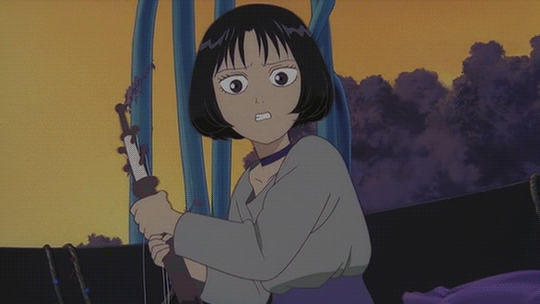
The character designs of Palme look simple in stills, but once you see them in motion, they're anything but - incredibly volumetric and full of life and movement.
In the 2000s and 2010s, Nakamura ended up working with Colorido and 4C a lot (naturally enough given the connection with Morimoto!), increasingly making effective use of CG in his projects. This led up to The Portrait Studio (写真館 Shashinkan) (c.f. AniObsessive) in 2015 - an almost solo short film, with Nakamura writing, storyboarding, designing characters and doing all the key animation, which is a kind of slice through Japanese history through the lens of a photographer who just wants to figure out a way to get his client to smile.
Much like Palme, The Portrait Studio combines simple character designs (in a stylised picture-book look) with very precise, realist animation on 2s and 1s to lend them a sense of density and 'existence'. Moreover, unlike most anime, it uses the raw pencils as finished lines instead of redrawing them clean on a computer. The style might call to mind Otomo's Cannon Fodder, and in fact the two films share a colour designer. 3D is integrated with an unusual degree of skill and subtlety. It makes for a fascinating combination, a very memorable and impactful film for all its apparent simplicity.
So, that's our focus for tonight! We'll be watching Catnapped!, A Tree of Palme and The Portrait Studio, and getting to find out what the deal is with Nakamura - one of the Very Important Guys in the history of anime, influential on so many of my faves... but all too often overlooked by people who aren't like, huge animation nerds.
If that sounds fun, come join me at twitch.tv/canmom - going live in just a minute! I've been wanting to do Nakamura for ages, and today I finally found energy for a writeup. See you there~
529 notes
·
View notes
Text

Profiles in Villainy
Doctor Eggman
Ivo Robotnik, better known by the alias of ‘Doctor Eggman,’ is an evil scientist and the arch-nemesis of Sonic the Hedgehog. A self-proclaimed genius and diabolical inventor, the doctor constantly hatches plots to establish his ‘Eggman Empire’ all across the earth and build his own utopia of ‘Eggmanland.’
It is possible that Eggman had once been a kindly scientist named Ovi Kintobor who became twisted and evil following a laboratory accident. From there on out, he dedicated himself to use his vast intellect to fulfill his egomaniacal ideals.
Despite the villain’s brilliance, Sonic and his friends have always found means to dash Eggman’s dastardly machinations. Never discouraged by such setbacks, Eggman has returned time and again with a seemingly endless supply of wild schemes to make his dreams of world conquest become a reality.
Dr. Eggman first appeared in the 1991 video game, Sonic The Hedgehog and would later appear in the 1993 animated series of the same name. Actors Masaharu Satō, Chikao Ōtsuka and Kotaro Nakamura have voiced the villain in the Japanese language versions; with actors Deem Bristow and Mike Pollock voicing the character in the English language versions. Dr. Eggman’s first animated appearance was in the debut episode of the Sonic The Hedgehog cartoon airing on September 18th, 1993.
56 notes
·
View notes
Text

Liko Nakamura
Liko is the grandson of Keala Hoapili of Sulani. He grew up there his entire life. He lives in Lani St. Taz and is at the point when he is ready to fall in love. He is a child of the ocean, a very active sim, and can get just a little bit jealous because he loves his significant other with his entirety.
Download Liko on the Gallery!
Origin ID: jelene2
Sims 4 Packs Used:
Island Living
Snowy Escape
High School Years
Cats & Dogs
City Living
Get to Work
CC List:
Defaults
@zerbu More CAS Presets
@pyxiidis EA Teeth BeGone!
@squea Pupa Default Eyes
@lamatisse Bare; Skintone Pack
Skin Details & Misc.
@simulationcowboy Flushed Blush
@johnnysimmer Maurice Hair
@simandy Spotlight
@meghewlett Random Moles
@goppolsme Eyebrows MG8
@pralinesims Mouth Corners
@obscurus-sims Overlay Nosemasks Set N2
@pyxiidis In Our Talons- Catchlight Overlays
@remussirion Hairline 02
@tamo-sim Basic 10 Eyebags Set
@kijiko-sims Uncurled Eyelashes
@squea Dusty Skinblend
@ayoshi Face Scars
Clothing & Accessories
@liliili-sims4 Simple Earrings 5
@liliili-sims4 Tariq Sandals
@trillyke Utopia Sleeveless Top
@casteru Camping Shorts
#the sims cc#the sims 4#sims4#ts4#create a sim#show us your sims#lookbook#sims 4 lookbook#sims lookbook#sims 4 cas#sims cas#maxismatch#maxismatchcc#ts4 custom content#sims 4 cc finds#custom content#custom content sims 4#maxis mix#simspo#island living#simblr#sulani#sims 4 gameplay#sims 4 creator#sims community#my sims#sims 4 cc#ts4 simblr#the sims 4 cas#ts4 cas
29 notes
·
View notes
Text
Exhibition: „Leise-Park” #nfcdab2024 6th Ed.

This is one you can't miss!!! We always prefer the low-cost guerrilla style. Near-Field Communication Digital Art Biennale aka #nfcdab presents the anniversary edition: #nfcdab2024 6th Ed. Berlin - "Leise-Park". We cordially invite you to the craziest and most legendary #nfcdab shows! We have finally arrived in Berlin! - In the frame of the Vorspiel / transmediale & CTM.
Important!!! All works will be presented via QR codes, you must have an active Internet and the ability to read QR codes to connect!
Vernissage and curatorial guided tour:
2 February 2024 2.00 – 3.00 PM
Open:
2 February 2024, 1.00 PM - 5 PM
3 – 4 February 2024, 8.00 AM - 5.00 PM
Leise-Park:
Heinrich-Roller-Straße 24, 10405 Berlin (DE)
Artists and art projects:
Adrian Pickett, Andrea Roccioletti, Andreas Maria Jacobs, Angy Vardalou, Anna Pinkas, Anna Utopia Giordano, AK Ocol, Ayshe Kizilçay - KiAy, Benna Gaean Maris, Bjørn Magnhildøen, Blazir, Bruce Barber, Bruno Melo, Bya de Paula, Dave Greber, Davey Whitcraft, Đurđija Vucinic, Elaine Crowe, James Hutchinson, Karl Heinz Jeron, Klaus Pinter, Marc Lee, Max Herman, Nico Vassilakis, Nicole Kouts, Oli Olinski, Osvaldo Cibils, Peter Kusek, Ricardo F. Bodini, Rudy Paganini - forevermidi_com, Shin Jungkyun, Stefanie Reling-Burns, Tiz Creel, Zsolt Mesterhazy, and #DUMPHAUS - Curated by Catalina Vallejos and Ronnie Karfiol - Artist: Featuring Deatxwish, Taiki Arita, Tiến Nguyễn, Trí Thiện, Lê Duy, Xuân Minh, Gia Huy, Flounder Lee, Martina Noskova, Idklang, Aaporia, Magdi Mostafa, Jialun Wang, Hiroshi Murakami, David Longshaw, Athina Kanellopoulous, Ioana & Pablo, The Mainstream Official, Oksana Rudko, Liu Chang, Chloe Cheuk, Kayoko Nakamura, Aleksei Martyniuk, Blanche The Vidiot, F.C. Zuke, Nina Sumarac, Giuseppe De Benedittis, Ania Urbanski, Contaminated Carcass, Jaimerative Art.
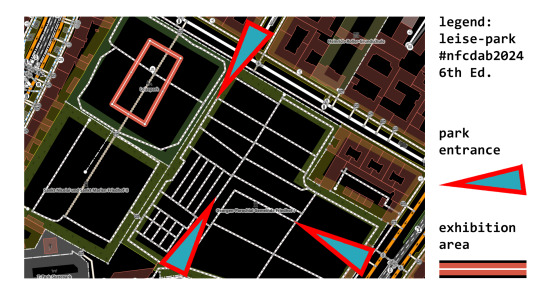
This year we are celebrating the 10th anniversary of the #nfcdab project, which could not exist without the trust of the artists. The idea was born at a time when not everyone was aware of the coming revolution in the reception of digital content caused by the advent of smartphones. In 2014, QR codes or NFC tags were a technology on the verge of becoming commonplace, and the same was true of wireless Internet and unfettered access to the Internet. 10 years later, we are in very different times. That's why we trusted the idea of DIWO, which is an important element of this - let's not be afraid to use the word: "research" project. The whole concept would not have been possible thanks to the help from browserbased.org and noemata.net in the persons of Zsolt Mesterhazy and Bjørn Magnhildøen, I must also mention Brian Khuu being our Australian liaison to the antipodes, and I want to thank the many people who have helped us over the years in organizing our shows: Konstantina Mavridou, Radovan Misovic aka Rad0, Tibor Horvath, Florian Kuhlmann.
More info:
https://vorspiel.berlin/events/nfcdab2024-6th-ed-berlin-leise-park-ausstellung
Supervisor and concept of the exhibition: Dominik Podsiadly
Organizers: #nfcdab - Dominik Podsiadly, noemata - Bjørn Magnhildøen, BrowserBased - Zsolt Mesterhazy.
Hashtags: #nfcdab #nfcdab2024 #leisepark
4 notes
·
View notes
Text
D4DJ Lore...?
Kinda messing with me right now that this is real lol. So I saw this post on Twitter:
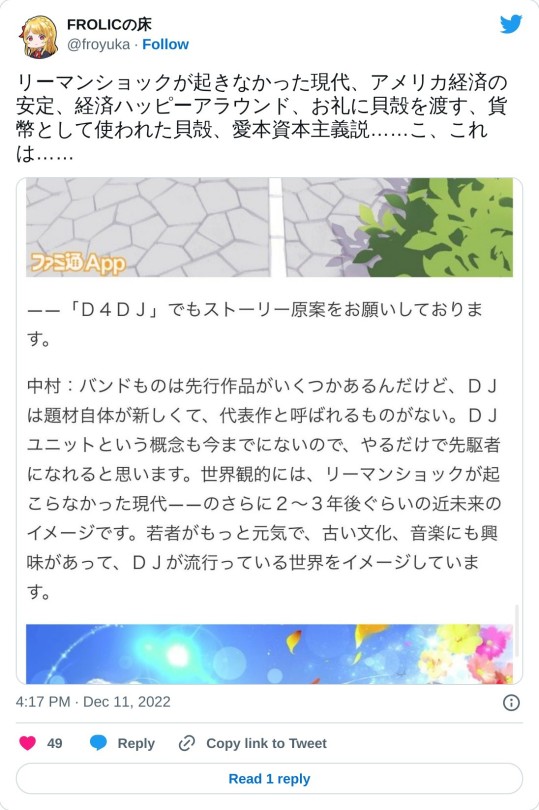
Which is a meme (I thought) of an interview with Nakamura Kou, the creator of D4DJ. Here's my rough translation of the 3rd sentence onward which stuck out to me:
In terms of the setting, the image is a near future about two to three years from now in a timeline where the Lehman Brothers collapse never happened. Young people are more energetic, and they're more interested in older culture and music, the image is a world where DJs are in fashion.
But it's real! And I guess it makes sense with what we see of the setting. There's a similar thing going on in Aikatsu, where there's a near future with hologram technology. This makes the logic of elaborate performance setpieces make a lot more sense, but unlike Aikatsu I can't recall a ton of actually crazy performances like that. In fact, most of the performances are pretty standard and not far from what you'd see today.
Another reason why you'd maybe want to establish this setting is maybe just to be able to use a futuristic aesthetic but also explain how the music sounds pretty much like what we have today. I like Carole and Tuesday's take on this, where the story takes place in 2050 or so but pop music isn't super different from where it is now, because according to Shinichiro Watanabe, pop music today isn't too different than it was 50 years ago in a sense.
There's a last aspect of this which I think is an astute observation but again, is something I would not expect from an idol franchise. It's not that D4DJ imagines a utopia necessarily, it's that any realistic vision of the future now, even a near future, pretty much is a dystopia. So if you want to establish a version of the present or any time close to it that is optimistic, colorful, etc., then logically something has to be different. I find it interesting that Nakamura actually thought about this and tried to shape the world to fit this observation somehow, even if I think no one would really bat an eye necessarily if it was never explained why precisely everyone is having a good time in a cheery idol anime. I wonder if utopias will come back into fashion soon.
It seems like an unnecessarily specific detail but as I mentioned in my Digimon Ghost Game post, these media mixes actually tend to put a lot of detail into their worldview or setting, even if most fans don't actually notice a lot of it.
6 notes
·
View notes
Text
Key's 1st Crossover TV Anime KAGINADO Announces Its Premiere Date of October 12
KAGINADO is Key's first crossover anime project featuring the main characters from its popular game/anime series, such as Kanon, AIR, CLANNAD, Little Busters!, and Rewrite. The TV anime's official website has opened to announce its premiere date of October 12, 2021, and main voice cast members.
While most of the voice cast memres will be reprising their characters from the games and anime, Misuzu Kamio from AIR will be newly voiced by Asami Sanada, because the character's original cast Tomoko Kawakami passed away in 2011.
Sanada says, "When I was asked to join an audition, I remembered Kawakami-san from our time together on the radio and in anime. I admired the way she could play any role with ease and cheerfully pull us together! I felt the work and the role were able to reach the hearts of the viewers because she was such a wonderful person. I got goosebumps when I was informed that I had been chosen for the role, and even as I write this comment, I feel again the size of the role and the responsibility. I will once again firmly hold on to what I felt I wanted to cherish, and I will firmly carry on Misuzu that Kawakami-san carefully spun!"
"KAGINADO" story introduction:
The Private Kaginado Academy. This is a demon-infested place where the legendary warriors of the world have gathered..., or rather, an utopia where they have squeezed out more tears than the total amount of water in Lake Biwa (estimated) from Key fans around the world for over 20 years. The goal of the Kirahoshi, who couldn't get enough of the fans' tear glands and have finally broken down the walls of the world and gathered together, is to enjoy a new school life in a new world. Free, joyful, and happy in every way. A dreamlike story begins.
Key visual:
Scene visuals:
Main voice cast:
From "Kanon":
Yuichi Aizawa: Tomokazu Sugita
Ayu Tsukimiya Yui Horie
Nayuki Minase: Mariko Kouda
Mai Kawasumi: Yukari Tamura
Misaka Shiori: Akemi Sato
Sawatari Makoto: Mayumi Iizuka
From "AIR"
Yukito Kunisaki: Daisuke Ono
Mizuzu Kamio: Asami Sanada
Kano Kirishima: Sara Takeda
Minagi Tono: Ryoka Yuzuki
From "CLANNAD"
Tomoya Okazaki: Yuichi Nakamura
Nagisa Furukawa: Mai Nakahara
Kyo Fujibayashi: Ryo Hirohashi
Ryo Fujibayashi: Akemi Kanda
Tomoyo Sakagami: Houko Kuwashima
Fusako Ibuki: Ai Nonaka
Kotomi Ichinose: Mamiko Noto
Yohei Sunohara: Daisuke Sakaguchi
From "Little Busters!"
Riki Naoe: Yui Horie
Rin Natsume: Tomoe Tamiyasu
Kyosuke Natsume: Hikaru Midorikawa
Masato Inohara: Nobutoshi Kanna
Kengo Miyazawa: Yusei Oda
Komari Kamikita: Natsumi Yanase
Haruka Saigusa: Keiko Suzuki
Yuiko Kurugaya: Ryoko Tanaka
Mio Nishizono: Shiho Kawaragi
From "Rewtite"
Kotaro Tennoji: Masakazu Morita
Kotori Kanbe: Chiwa Saito
Chihaya Ohtori: Saya Shinomiya
Akane Senri: Eri Kitamura
Shizuru Nakatsu: Keiko Suzuki
Lucia Konohana: Risa Asaki
Kagari: Kana Hanazawa
Yumemi Hoshino: Keiko Suzuki
Main staff:
Original Story: VISUAL ARTS/Key
Director: Kazuya Sakamoto
Series composition: Takashi Aoshi
Screenplay: Takashi Aoshi, Kai, Touya Okano
Character Design: Eriko Haga
Prop Design Kazunari Araki
Art Director: Yukihiro Shibuya
Color Design: Asami Kitsukawa
Director of photography: Tomoaki Suzuki
Editing: Kazuo Kajiya
Sound director: Akane Maeda
Sound production: Tohokushinsha
Music production: VISUAL ARTS/Key
Animation production: Liden Film Kyoto Studio
Source: Bushiroad press release
©VISUAL ARTS/Key/KAGINADO
By: Mikikazu Komatsu
2 notes
·
View notes
Text
Anime i’ve Watched
That begin with a S (Part 3)!
Yep this is how i’m going to bring over all the anime and manga i’ve watched and posted about on the old blog. It’s not so detailed but it will have to do. Anything new I watch or read from this point on will have their own posts.
Shinsekai yori (From the New World):
Genres: Drama, Horror, Mystery, Psychological, Sci-fi, SUpernatural
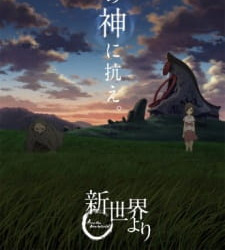
Synopsis: In the town of Kamisu 66, 12-year-old Saki Watanabe has just awakened to her psychic powers and is relieved to rejoin her friends—the mischievous Satoru Asahina, the shy Mamoru Itou, the cheerful Maria Akizuki, and Shun Aonuma, a mysterious boy whom Saki admires—at Sage Academy, a special school for psychics. However, unease looms as Saki begins to question the fate of those unable to awaken to their powers, and the children begin to get involved with secretive matters such as the rumored Tainted Cats said to abduct children.
Shinsekai yori tells the unique coming-of-age story of Saki and her friends as they journey to grow into their roles in the supposed utopia. Accepting these roles, however, might not come easy when faced with the dark and shocking truths of society, and the impending havoc born from the new world.
[Written by MAL Rewrite]

My Rating: 8/10
Finished airing in 2013 with a total of 25 episodes.
MY Thoughts: What a wild concept and execution. I feel like some bits were executed a bit poor but overall it’s an interesting anime worth at least a single watch in my opinion.
Shisha no Teikoku (The Empire of Corpses):
Genres: Film, Sci-fi, Historical, Psychological
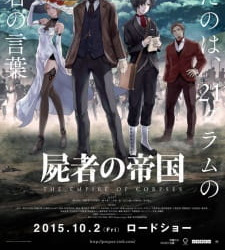
Synopsis: By the 19th century, humanity has cultivated technology enabling the reanimation of corpses. Unable to experience individual thoughts or emotions, the corpses are programmed by humans to act as laborers in various occupations.
This newfound technology, however, comes with a catch. Science may be able to restore the corpses' ability to move, yet it cannot return what every corpse loses at death: the soul. But Doctor Victor Frankenstein, who vanished shortly after his revolutionary work on corpse reanimation, is said to have revived the only corpse in possession of a soul.
In pursuit of this scientific knowledge, London medical student John Watson hopes to fulfill his promise to his late partner, Friday. After being scouted by a government agency, Watson is on a hunt to obtain Frankenstein's notes, which he believes hold the key to the secrets of the soul. During his search, Watson uncovers the harsh realities of the developing corpse technology and the price he must pay to advance his research.
[Written by MAL Rewrite]

My Rating: 5/10
A film released in 2015.
My Thoughts: Very clear Frankenstein influence. Pretty bleh. Nothing great. Not worth a watch.
Shouwa Genroku Rakugo Shinjuu:
Genres: Drama, Historical, Josei

Synopsis: Yotarou is a former yakuza member fresh out of prison and fixated on just one thing: rather than return to a life of crime, the young man aspires to take to the stage of Rakugo, a traditional Japanese form of comedic storytelling. Inspired during his incarceration by the performance of distinguished practitioner Yakumo Yuurakutei, he sets his mind on meeting the man who changed his life. After hearing Yotarou's desperate appeal for his mentorship, Yakumo is left with no choice but to accept his very first apprentice.
As he eagerly begins his training, Yotarou meets Konatsu, an abrasive young woman who has been under Yakumo's care ever since her beloved father Sukeroku Yuurakutei, another prolific Rakugo performer, passed away. Through her hidden passion, Yotarou is drawn to Sukeroku's unique style of Rakugo despite learning under contrasting techniques. Upon seeing this, old memories and feelings return to Yakumo who reminisces about a much earlier time when he made a promise with his greatest rival.
Shouwa Genroku Rakugo Shinjuu is a story set in both the past and present, depicting the art of Rakugo, the relationships it creates, and the lives and hearts of those dedicated to keeping the unique form of storytelling alive.
[Written by MAL Rewrite]

My Rating: 10/10
Finished airing in 2016 with a total of 13 episodes.
My Thoughts: A masterpiece, one of my favourite animes to date and it even has a sequel! Great artwork, music, story and characters. A very interesting experience. That being said... it may not be an anime for everyone but if it interests you I highly recommend this particular title!
Shouwa Genroku Rakugo Shinjuu: Sukeroku Futatabi-hen:
Genres: Drama, Historical, Josei

Synopsis: Even after having risen to the utmost rank of shun'ichi, Yotaro struggles to find his own identity in the world of rakugo. Caught between his master's teachings and the late Sukeroku's unique style, his performance lacks an important ingredient—ego. And while his popularity packs the theaters, he is but one of the few; rakugo is under threat of being eclipsed.
Meanwhile Yakumo, regarded by many as the last bastion of preserving the popularity of rakugo, struggles to cope with his elderly state. Even though his performances are still stellar, he fears that he is nearing his limits. His doubts grow stronger as an old friend creeps ever closer. Konatsu, for her part, attempts to raise her son as a single mother, which Yotaro is heavily opposed to. Instead, he seeks to persuade her to marry him and in turn raise her son as his own.
In Shouwa Genroku Rakugo Shinjuu: Sukeroku Futatabi-hen, the curtains fall on Yotaro and Yakumo's story, tasked with restoring the near-obsolete art form as well as overcoming their internal conflicts.
[Written by MAL Rewrite]
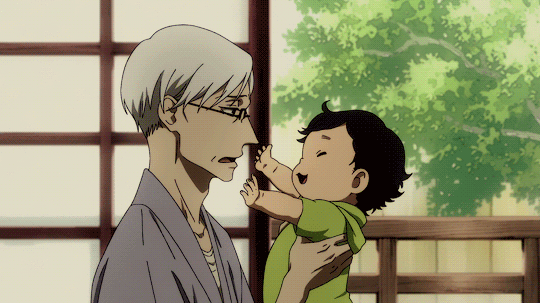
My Rating: 10/10
Finished airing in 2017 with a total of 12 episodes.
My Thoughts: Just as good, if not better than the first season. A perfect ending to a perfect story.
Skip Beat!:
Genres: Comedy. Romance, Drama, Shoujo

Synopsis: Bright, diligent, and yet naïve 16-year-old Kyouko Mogami works hard to support the career and dreams of her childhood friend, crush, and rising pop icon, Shoutarou Fuwa. Toiling endlessly at burger joints and tea ceremonies, the innocent Kyouko remains unaware that day in day out, all her tireless efforts have been taken for granted, until, one day, she finds out that her beloved Shou sees her as nothing but a free servant. Shocked, heartbroken and enraged, she vows to take revenge on the rookie star by entering the ruthless world of entertainment herself. As she steps into this new life, Kyouko will face new challenges as well as people who will push her out of her comfort zone.
Based on the best-selling shoujo manga by Yoshiki Nakamura, Skip Beat showcases the growth of a young woman who slowly unlearns how to work herself to the bone for the satisfaction of others and takes her future into her own hands instead.
[Written by MAL Rewrite]

My Rating: 7/10
Finished airing in 2009 with a total of 25 episodes.
My Thoughts: I do not love the artwork... but that can be easily overlooked. Honestly I can’t remember all that much about this particular anime. I do know that it has a manga which is much further along than the anime.... so maybe you should check that out first if you’re interested and watch the anime as extra after?
#shinsekai yori#from the new world#anime#past anime#the empire of corpses#shisha no teikoku#films#shouwa genroku rakugo shinjuu
23 notes
·
View notes
Text
Works Cited
Arcenio, Raquel. “Through the Viewfinder: the Nostalgia of the Polaroid Camera.” HerCampus, HerCampus Ryerson, 3 November 2017, https://www.hercampus.com/school/ryerson/through-viewfinder-nostalgia-polaroid-camera.
Barthes, Roland. Camera Lucida. Hill & Wang, 1980.
Berger, John. Ways of Seeing. Penguin Random House, 1972.
Bromwich, Jonah Engel. “Everyone Is Canceled.” The New York Times, 28 June 2018, https://www.nytimes.com/2018/06/28/style/is-it-canceled.html.
Browne, Simone. “Branding Blackness: Biometric Technology and the Surveillance of Blackness.” Dark Matters: On The Surveillance Of Blackness. Duke University Press, 2015, pp. 95-115.
Campbell, Morgan. “The Raptors’ Jurassic Park is a Racial Utopia: The Rest of Toronto Needs Work.” The Star, 29 May 2019, https://www.thestar.com/sports/sports-prism/2019/05/29/jurassic-park-is-a-racial-utopia-the-rest-of-toronto-still-needs-work.html.
Dean, Jodi. “Images Without Viewers: Selfie Communism.” FOTO Museum, 02 January 2016, https://www.fotomuseum.ch/en/explore/still-searching/articles/26420.
doddleoddle. YouTube, https://www.youtube.com/user/doddleoddle.
Duguay, Stefanie. “Lesbian, Gay, Bisexual, Trans, and Queer Visibility Through Selfies: Comparing Platform Mediator Across Ruby Rose’s Instagram and Vine Presence.” Social Media + Society, 2016, pp. 1-12, doi: 10.1177/2056305116641975.
Elkins, James. How to Use Your Eyes. Routledge, 2000.
Fajardo, Justine. “Bad Photos of Insta: Questioning Reality Through Photographic Binaries on Instagram.” WordPress, Ryerson University, 7 April 2018, http://visualculture.blog.ryerson.ca/bad-photos-of-insta-questioning-reality-through-photographic-binaries-on-instagram/.
Fournier, Lauren. “Sick Women, Sad Girls, and Selfie Theory: Autotheory as Contemporary Feminist Practice.” Auto/Biography Studies, vol. 33, no. 3, 2019, pp. 643-662, doi: 10.1080/08989575.2018.1499495.
Frosh, Paul. “The Gestural Image: The Selfie, Photography Theory, and Kinesthetic Sociability.” International Journal of Communication, vol. 9, no. 1, 2015, pp. 1607-1628, doi: 1932–8036/2015FEA0002.
Hoang, Weylie. “How to Put on a Tampon.” YouTube, 10 November 2010, https://www.youtube.com/watch?v=XNP0qhBdfH1&t=266s.
Kenney, Theresa. “A Selfie/Culture Commonplace Book.” Tumblr, https://selfiecollection708.tumblr.com/.
Kim, Dorothy. “Social Media and Academic Surveillance: The Ethics of Digital Bodies.” Feminist Technology, 7 October 2014, https://modelviewculture.com/pieces/social-media-and-academic-surveillance-the-ethics-of-digital-bodies.
Lee, Vicki. “The Ends Justify the Memes.” HerCampus, HerCampus Ryerson, 31 January 2017, https://www.hercampus.com/school/ryerson/ends-justify-memes.
Marwick, Alice. “Celebrity Status.” Status Update: Celebrity, Publicity, and Branding in the Social Media Age, 2013, pp. 110-120.
Marwick, Alice. “Instafame: Luxury Selfies in the Attention Economy.” Public Culture, vol. 27, no. 75, 2015, pp. 137-160, doi: 10.1215/08992363-2798379.
Nakamura, Lisa. “Afterword: Blaming, Shaming, and the Feminization of Social Media.” Feminist Surveillance Studies, Eds. Rachel E. Dubrofsky and Shoshana A. Magnet, 2015, pp. 221-228.
Saltz, Jerry. “At Arm’s Length: A History of the Selfie.” Vulture, New York Media, 26 January 2014, https://www.vulture.com/2014/01/history-of-the-selfie.html.
Sellinger, Katrina. “Pink Coat Selfies.” Tumblr, https://pinkcoatselfies.tumblr.com/.
Senft, Theresa M. and Nancy K. Baym. “What Does the Selfie Say? Investigating a Global Phenomenon.” International Journal of Communication, vol. 9, 2015, pp. 1588–1606, https://ijoc.org/index.php/ijoc/article/view/4067/1387.
The Innovation of Loneliness. Vimeo, uploaded by BOLD Studio, 2013, https://vimeo.com/70534716.
Turner, Graeme. Fame Games. Cambridge University Press, 2000.
Turkle, Sherry. “Connected, But Alone.” TED. TED Talks, Accessed 03 May 2019, http://www.ted.com/talks/sherry_turkle_alone_together/transcript?language=en.
1 note
·
View note
Note
2, 13, 20. *spins the wheel* (from oc asks pt 2)
2. Is there a meaning behind their name, or a particular reason why they have it?
Eden Azalea's name has such a long boring history behind it that I fear I would put everyone to sleep recounting it, suffice it to say that it comes from the names I used for two previous MMO's I played before xiv, as well as my online tag. In-game, as we know, eden is the fae word that means utopia, and is the alias she adopted for herself on a whim following the loss of her memories. Her birth name is Tsutsuji.
Kiana's name origin story is that I literally took Kiara from the Lion King II and changed one letter for the OC I was developing for my Inheritance Cycle fanfic, from which she originates. Kveykva is from the in universe ancient language of that series, and means lightning. The name Kiana itself is of Hawaiian origin and means divine, so put em together and you get divine lightning, which, I mean, is pretty metal ngl. Ironic since she's the most Baby of the three.
Airi Nakamura was the name given to a Bleach OC made for me by a friend. Airi itself has meanings both in Japanese (beloved jasmine) and Finnish (messenger). In story it has come to be her nickname, as her full first name is Aurora.
13. What are their views on marriage? If they want to get married, what would their dream wedding be like?
Eden, as the sole married one of the three, thinks marriage is pretty dang sweet. In keeping with both her and Astor's (@tiredassmage) wishes, theirs was a fairly quiet wedding, much to the chagrin of much of the Alliance who wanted a union between two Warriors of Light to be a grand affair. But enough of their lives and accomplishments are under the scrutiny of the public that they are happy to keep such a moment to themselves. With that said, let there never be any doubt that the two are deeply, deeply in love. Eden couldn't imagine a future without him in it that she would want for herself, and he will never fail to get a shiver of delight out of her when calling her Mrs. Caulfield.
Airi's views on marriage are...complicated. On one hand, she would absolutely be down for a lavish affair and the chance to dress up and declare her vows! But. Her strict parents drilled into her that her marriage would be one that benefits their family, feelings and romance be damned, giving her an overall bitter feeling toward the idea. Additionally, the man who owns her heart is...not one for conventional weddings, period. It was already a shock to see him dressed up for the Banquet at all. And their bond is already one that has transcended eons and lightyears, to declare their union in a ceremony seems very insignificant in comparison. There will be opportunities to dress up, but a wedding as the setting is unlikely for the time being.
What AU would they belong in the best?
See it's funny, because all three of them come from other fandoms, technically making ffxiv the AU!
Of the three of them, however, Eden's characterization was developed the most in xiv, and it's become a little difficult to fit her into other universes without having to change large parts of her (such as her memory loss and future-sight Echo). If I had to pick one AU she would do well in, it's one where she can flex her full queenly self to its max, so something in the fantasy/historical fiction genre would fit her. If she finds herself
Kiana is meant to be an underdog protagonist, so she's very flexible on where she can go. I do still carry a soft spot for her original incarnation as a surprise Dragon Rider in the war between the Varden and the Empire. She's most recently found herself in a small YGO 5'Ds AU with a few friends.
Airi is also very flexible on which universes she can go into, she usually fits into the role of the rich family's runaway heiress (think Lucy from Fairy Tail), who like any Disney princess just wants more than whatever stifling role her parents want to force her into. Bonus points if she's able to meet a brooding world-weary grump who slowly warms up to and falls in love with her over the course of the story (psst Shay that's your queue)
1 note
·
View note
Text
Erasure / Visibility
The primary theme of these readings (Nakamura, Beckman, and Brown) is erasure, and how erasing people of color and other minorities from history is a form of oppression and perpetuation of white hegemony. Although ethics are a grey area, it is clear that motivations are just as important as methods.
Nakamura discusses the outdated conception of the internet (Web 1.0) as a post racial utopia, often framed in the 1990s as a curative to racism. Stating that “Critical race theory and political-economic approaches caught up to the Internet around the turn of the century, ” Nakamura argues that postindustrial societies, including cyberspace, are gendered and racialized” (p. 48). Nakamura distinguishes between the entities of Web 1.0 and 2.0. Whereas Web 1.0 was conceptualized the internet as an alternative reality, a different place in which one could exercise agency and live out fantasies of control” (p.49), Web 2.0, according to Nakamura, “makes claims to harness collective intelligence, (p. 49),”or making race through digital means, (p. 50). Nakamura argues that race is not merely socially constructed in the real world but “user-generated,” online. “Racialization has become a digital process,” states Nakamura, “just as visual imaging practices, labor, and social discourse have” (p. 52).
Arguing that the “burden of digital media’s device production is borne disproportionately by the women of color who make them (p. 920), Nakamura describes how Navajo women were often painted as workers “uniquely suited by temperament, culture, and gender as ideal predigital digital workers” (p. 921). Nakamura argues that women’s labor production by the Navajo women was understood as a “labor of love,” reproducing their culture rather than merely for wages. Although US laws provided a means for companies to exploit workers for below minimum wage, it was embraced by Navajo leadership as way of modernising the Native American tribe. Per Nakamura, “this new notion of the Navajo as “Industrial” produced a complicated identity whose formation relied on the idea that the tribe could be modern, even hypermodern, precisely as a result of being distinctively Indian” (p.924-925). Navajo women were painted as the perfect employee, because of their “nimble fingers and passive personalities” (p. 933). Navajo states that “the understanding of a specific population as possessing traits and behaviors that belong to a race, not an individual—is a process, not a product” (p. 934).
Providing examples of late 19th century British anxieties toward the increasing independence of women, Beckman argues that the spectacle of vanishing women “both reflects and refutes Victorian anxieties about female surplus” (p. 19). Beckman also connects the foundation of British feminism with its history of imperialism. “In the nineteenth century the discourses of gender and imperialism become increasingly intertwined with each other around the idea of vanishing in important and interesting ways” (p. 21). Beckman discusses how the popularity of the vanishing lady magic act often embodied the hegemonic fears of diminishing control of both British women and the territory of Indian. “The male magician makes this body vanish, and, though it often returns at the end of the trick, the female body seems to lie completely in the hands of the magician, or so the trick would have us believe” (p. 47).
Brown focuses on cultural privacy including the tension between historians who wish to collect and store priceless collections of artifacts from the Hopi tribe and the tribe’s wishes to have their artifacts returned to them. This paper brings up ethical concerns of preservation/erasurability and cultural disruption. Brown discusses some of the tribal strifes created by the NAGPRA, an organization designed to provide protections for Indians. Many factions disagree with how this artifacts are to be displayed and treated. Brown discusses the ethical concern; when is it appropriate for ethnographers to record history of people of color. Can history be a form of violence, hiding as a right to refuse visibility. Is becoming visible actual a form of oppression?
1 note
·
View note
Photo
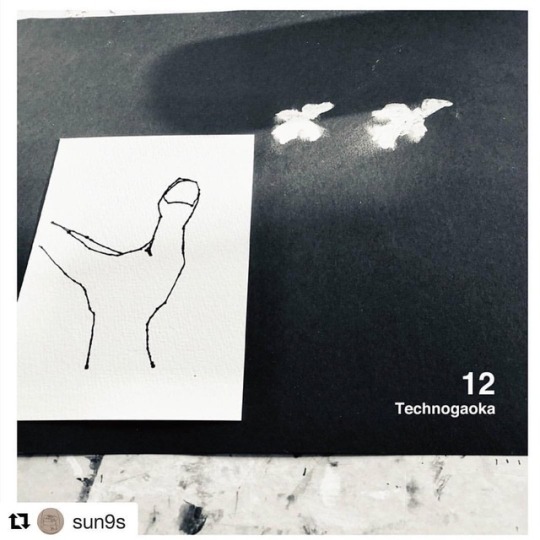
☺︎ Technogaoka vol.12 1F LIVE: サワサキヨシヒロ & NGEO DJ COMPUFUNK PULSEMAN DJ: ELLI ARAKAWA ALTZ KIHIRA NAOKI SOUND: ADS 2F DJ: makkie TOMO SAIJO HIDE FM Keishi Nakamura Yonezawa Junpei Fukunaga kariya SOUND: timedomain DECO: ONA Technogaoka DJ: 小林 maruotakeshi Match オオハライタル FOOD: 六甲山カフェ clapham inn Beinelmilel Pirate Utopia ... BAR: KATAKAMNA NOMU WINE: wine bar Nadja BOTANICAL LIFE COFFEE: YOTSUBA COFFEE WEAR: studio soap 2018.06.30 sat 21:00 〜 06:00 ご予約 3,500円 当日 4,000円 . . #technogaoka#techno#noise#industrialmusic#industrialtechno#for#musiclover
2 notes
·
View notes
Text
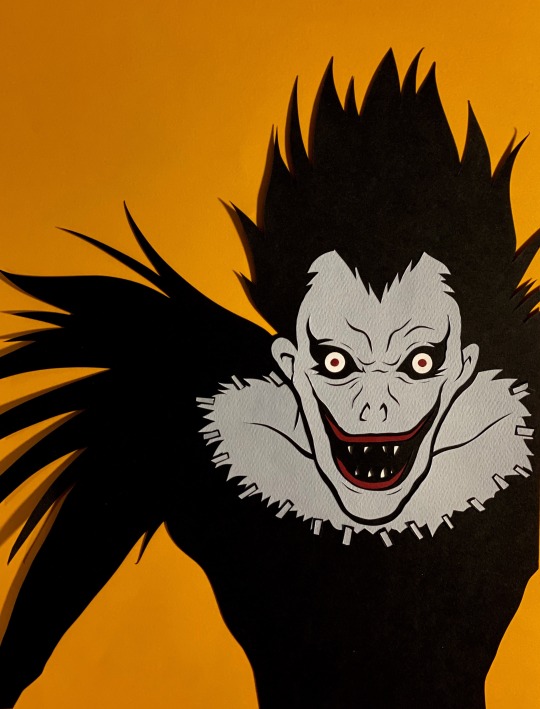
Profiles of Villainy
Ryuk
The demonic Ryuk is a Shinigami, an entity of death, who had become bored in his eternal immortality. So to entertain himself, he manifested into being a special notebook bestowed with the power of death. Whomever finds this book can simply write a person’s name into its pages and said individual’s fate is sealed... they will perish in short order.
This death book was discovered by a young man named Light Yagami. A bright and idealistic high school student, Light quickly discovered the power this book bestowed unto him. He found that the book could not only kill any whose name is written in it, but adding more details could even determine the manner in which they died. The enormity of this power was overwhelming to Light. It corrupted him and he used the book in an effort to create and lord over a utopia cleansed of evil, with him as its god-like judge determining who should live and who deserves death.
As Light orchestrates the deaths of various cads, criminals and unscrupulous celebrities throughout the city, the string of strange deaths was investigated by the detective, L Lawliet. An especially gifted investigator, Lawliet was able to discern these seemingly separate deaths are connected... as the work of a lone individual whom he labeled ‘The Kira.’ Furthermore, Lawliet was able to figure out the importance of a person’s name in the use of the death book and, as such, he made sure to remain ostensively anonymous. Here on out he was known simply by his initial, ‘L.’
L came to suspect Light was the Kira and a drawn out game of cat-and-mouse ensued. A pursuit that ultimately resulted in the deaths of both L and Light.
Light’s former acolyte, Misa, attempted to become the new Kira, using the Death Note to continue the work of Light. Yet the movement dissipated and Ryuk grew bored by his experiment. It was Light himself who had so captivated Ryuk, not the book, and with him gone the game lost its luster.
Actor Nakamura Shidō provided the voice for the Shinigami in the original Japanese anime (with actor Brian Drummond voicing the character in the English language dub). Ryuk first appeared in the debut episode of Death Note airing on October 4th, 2006.
53 notes
·
View notes
Video
Technogaoka vol.12 At Askiya Daihikaku 1F LIVE: 越前屋俵太 サワサキヨシヒロ & NGEO DJ Compufunk pulseman DJ: Elli Arakawa ALTZ Kihira Naoki SOUND: ADS 2F DJ: makkie TOMO SAIJO HIDE FM Keishi Nakamura Yonezawa Junpei Fukunaga kariya SOUND: timedomain DECO: ONA Technogaoka DJ: 小林 maruotakeshi Match オオハライタル FOOD: 六甲山カフェ clapham inn Beinelmilel Pirate Utopia ... BAR: KATAKAMNA NOMU WINE: wine bar Nadja BOTANICAL LIFE COFFEE: YOTSUBA COFFEE WEAR: studio soap #technogaoka #ashiya #japan #event #love #techno #dj #chill (at 芦屋大悲閣)
1 note
·
View note
Photo

Download Somna - Reanimate Music 075 for free now!
Artist: Somna
Show: Somna – Reanimate Music 075
Quality: 320 Kbps 48000 Khz
Genre: Trance
Source: RSS
Discover more Somna live sets & radioshows HERE
Somna – Reanimate Music 075 Tracklist
1. Shingo Nakamura – Phenomena [Monstercat Silk]
2. Boxer & Diana Miro – In The Dark [Colorize]
3. Scorz feat. Lywe – Easy Love [Armada Music]
4. Nomra & MOONE – Fall In [Enhanced Music]
5. Andy Moor – Safe On Both Sides [Enhanced Music]
6. Dan Lir feat. Lily Elis – Stay [AVA Recordings]
7. Ramsey Westwood – Furiosa [AVA Recordings]
8. Patrik Humann & Sarah de Warren – Love Again [Enhanced Progressive]
9. Mark Sixma & Jordan Shaw – Somebody Else Instead (Fisherman Remix) [Armada Music]
10. Solis & Sean Truby feat. Sue Mclaren – Closer To The Earth (Somna Remix) [Infrasonic Gold]
11. GXD & Dan Thompson – Utopia (Hidden Wonderland Anthem) [A State Of Trance]
12. Ilan Bluestone feat. Ellen Smith – Stranger To Your Love (Stoneblue Remix) [Anjunabeats]
13. Somna & HALIENE – Secret (Chillout Mix) [AVA Chill
0 notes
Photo
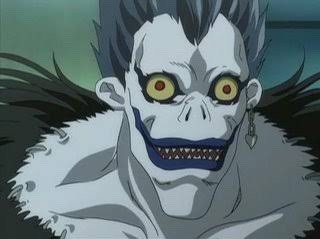



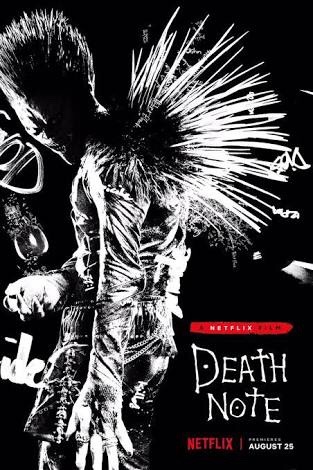
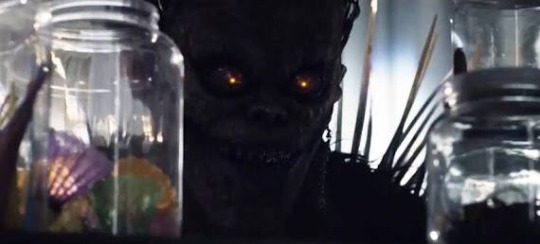
Ryuk (Japanese: リューク Hepburn: Ryūku) is a fictional character in the manga series Death Note, created by Tsugumi Ohba and Takeshi Obata. He is a bored Shinigami that drops a Death Note, a notebook that allows you to kill anyone simply by knowing their name and face, into the human world in order to have fun. It is picked up by Light Yagami, a young genius who uses it in an attempt to create and rule a utopia cleansed of evil, with him at the helm as a "god".In the anime adaptation, Ryuk is voiced by Nakamura Shidō in Japanese and by Brian Drummond in the English version. Both actors reprise their roles for voicing the computer-generated version of the character in the live-action films, with Jun Fukushima voicing the CG version in the live-action television drama. In the musical, Ryuk was portrayed by Kōtarō Yoshida. Willem Dafoe voices the CG version in the American film adaptation.

2 notes
·
View notes